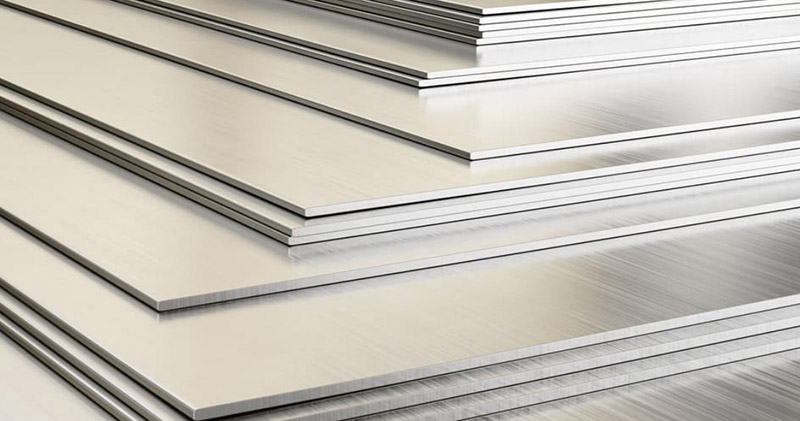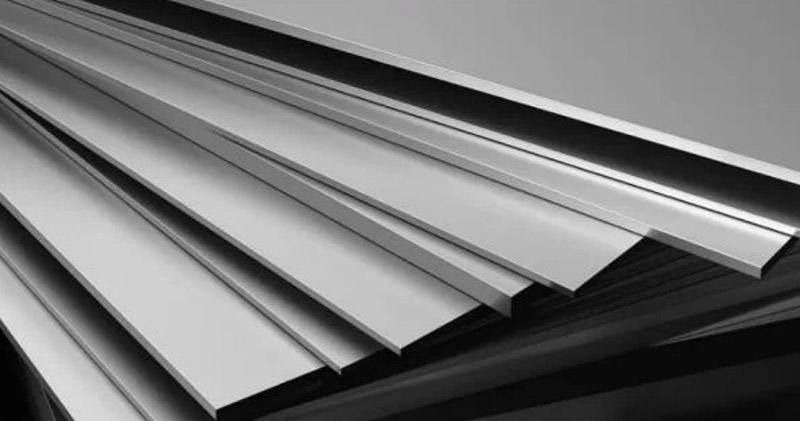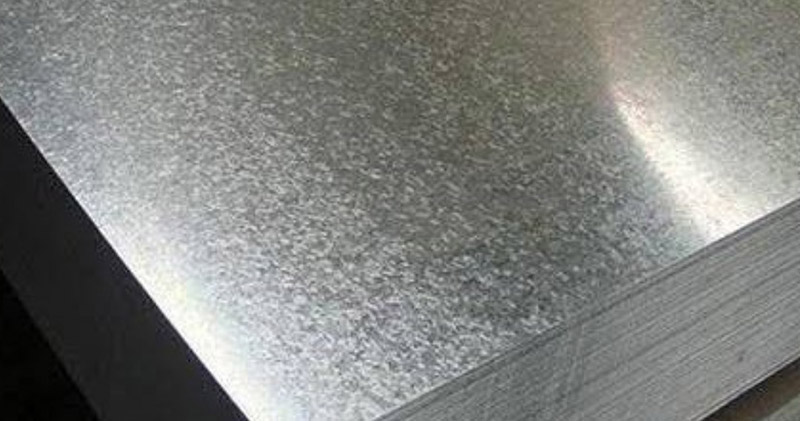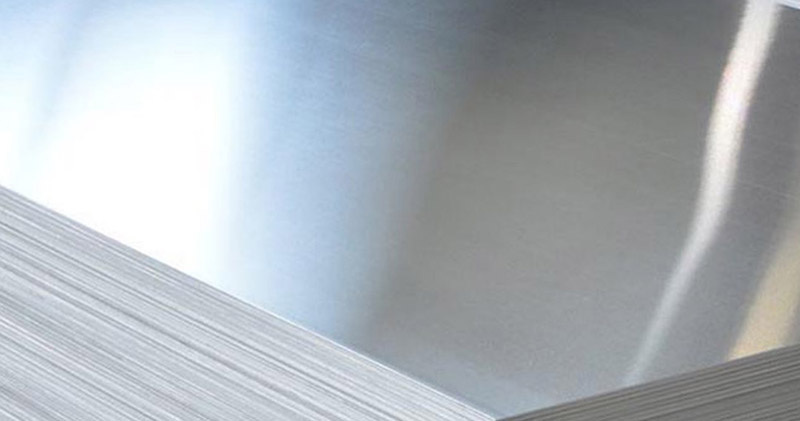Meet Your Metals
Understanding these materials will help you choose the right one for each product and explain their benefits to your customers.

What is it?
304 Stainless Steel is a shiny, silver metal that doesn’t rust easily. It’s called “stainless” because it resists stains or rust (thanks to chromium in it). Think of the metal you see on kitchen appliances, that’s usually stainless steel.
Why it’s great
It’s super durable and stays bright and shiny even if it rains. Stainless steel is also very strong (it won’t bend or crack under normal use). It gives products a high-end, professional look (imagine a sleek modern hotel sign, it’s likely stainless steel). It is heavier than some other metals and a bit more expensive, but it lasts a long time without rusting.
Where to use it
Use stainless steel when you want a premium look or for outdoor items that need to handle weather. It’s great for house numbers, logo signs, or awards that you want to look polished and never rust.

What is it?
A36 Mild Steel is regular steel; the kind of strong metal used in buildings and cars. “Mild” just means it has low carbon content, making it tough but still workable. It’s usually a dull gray color and will rust if left bare in rain (you might see orange-brown rust on plain steel over time).
Why it’s useful
Mild steel is very strong and affordable. It’s one of the most common metals around, so it’s economical for big projects. It’s great if you plan to paint or powder-coat the product, because it holds paint well. In fact, many metal products start as mild steel and then get painted to prevent rust. You can also let it rust on purpose for a rustic look (some decor pieces use intentionally rusted steel for aesthetic). It’s easy to cut and weld, which makes it versatile for custom designs.
Where to use it
Use A36 steel for cost-effective options or when you’ll add a finish. For example, a decorative panel that will be painted black, or a house sign that will be coated. It’s also used for industrial-look art or signs where a little rust patina is part of the charm. Just remember to coat it if you don’t want rust.

What is it?
Galvanized Steel is steel that has been coated in zinc. Q235 is a common grade similar to A36, but the key part is “galvanized.” Think of a piece of metal with a shiny, spangled (speckled) silver surface, that’s the zinc coating. The zinc acts like a protective skin.
Why it’s great
The zinc coating stops the steel from rusting. Even if it gets wet, the steel underneath stays safe because the zinc takes the hit (this is called sacrificial protection – the zinc “sacrifices” itself to corrosion so the steel stays fine). Galvanized steel is very durable outdoors. It’s often used for things like street signs, lamp posts, or fences. Pretty much all items that live outside in all weather. It has all the strength of regular steel but with extra protection against rain and snow.
Where to use it
Use galvanized steel for outdoor products where you want affordability and weather resistance. It’s good for utility items like outdoor directional signs, fence inserts, or garden screens. You can also paint over galvanized steel (with proper primers) to get the color you want plus rust protection. Just note: where the steel is cut, the exposed edges could rust if not sealed, because the cutting removes the zinc on the very edge.

What is it?
Aluminum is a light, silver-colored metal (soda cans are aluminum, though those are very thin and soft). 6061-T6 is a special type of aluminum that has been heat-treated (“T6” tempered) to be stronger. It’s one of the most common aluminum alloys used in everything from airplane parts to bike frames.
Why it’s great
Aluminum is super lightweight (about 1/3 the weight of steel) but can be very strong (especially in 6061-T6 form). It never rusts. Instead of rust, aluminum can get a dull oxide layer, but it protects it from further corrosion. So, aluminum is ideal for outdoor use or for keeping weight down. 6061 alloy in particular is known for being versatile, easily formed or machined, weldable, and corrosion resistant. That means you can cut it into fancy shapes, and it will stay sturdy but not heavy. It also has a nice silvery appearance that can be brushed, polished, or painted.
Where to use it
Use 6061-T6 aluminum when you need a light but strong product. For example, large signs or panels (aluminum won’t put too much weight on a wall), drop-shipped items (lighter means cheaper shipping), or anywhere rust is a concern. Aluminum is often the top choice for outdoor signage, decorative screens, and even custom car parts, because it’s tough yet easy to handle. If your customers want different colors, aluminum can be painted or anodized nicely. Just note where the steel is cut, the exposed edges could rust if not sealed, because the cutting removes the zinc on the very edge.

What is it?
5082 Aluminum is another type of aluminum alloy, mixed mainly with magnesium (that’s why it’s labeled Al-Mg). It’s similar to 5083 and other “5xxx series” aluminums which are known for excellent corrosion resistance. Think of 5082 as aluminum made for tough environments. It’s also not heat-treatable like 6061 (meaning it’s a bit softer), but it can be strengthened by working it (cold work).
Why it’s great
Because of the magnesium, 5082 aluminum is especially resistant to corrosion, even in saltwater or marine environments. It’s often used in ship hulls and marine equipment. so if it can handle the ocean, it can handle rain and weather easily. It has high strength (not quite as high as 6061-T6, but still very strong) and is easily weldable and formable. 5082 is basically built for outdoor durability, it won’t corrode easily and can take a beating while remaining fairly lightweight (like all aluminum).
Where to use it
Use 5082 aluminum for outdoor and marine-grade products. For instance, boat or dock signs, coastal area decorations, or heavy-duty outdoor screens. It’s a good choice when you know the item might face harsh weather, or if you need to do a lot of welding on the aluminum (5082 welds nicely). In many cases, 6061 and 5082 can be used interchangeably for our kinds of products, but 5082 shines (pun intended) when maximum corrosion resistance is needed.